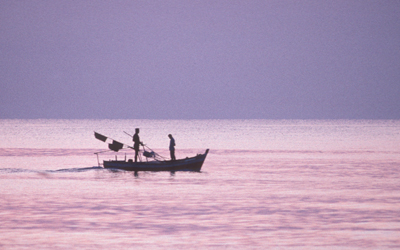 One of the more rewarding aspects of photographing the sea is its ever-changing mood. Large expanses of water respond to the seasons and tides, and react on a minute-by-minute basis to the smallest changes of wind and weather. There is also always something happening on the coast. Waves break, boats come and go, birds circle in search of food and people go about their various pursuits. Visits made to the same location on successive days consequently reveal quite different moods and activities.
One of the more rewarding aspects of photographing the sea is its ever-changing mood. Large expanses of water respond to the seasons and tides, and react on a minute-by-minute basis to the smallest changes of wind and weather. There is also always something happening on the coast. Waves break, boats come and go, birds circle in search of food and people go about their various pursuits. Visits made to the same location on successive days consequently reveal quite different moods and activities.
As with so many types of photography, seascapes tend to be more interesting at the beginning and end of the day. Much depends upon beautiful or dramatic lighting. Sunrises and sunsets, reflections in calm conditions, approaching storms, high winds and rough seas all increase the chances of good images.
In tranquil tropical conditions colour is likely to be an important factor in any seascape. The blues and greens reflected by clear water sandwiched between white underwater sand and perfect clear skies have to be seen to be believed. Use a polarizing filter to remove any reflections and intensify the colours. At sunset, in similar conditions, the water really does turn orange. Add the simple silhouette such as that of a boat or a tree and the image can be breathtaking.
The reflections of sky and colour in smooth wet sand at the water’s edge also make interesting subjects. Each wave brings new light and shapes to the mirror-like surface. Photographed at sunset against a backdrop of rock or cliffs, this sort of subject offers wonderful opportunities. A slow shutter speed, perhaps slower than half a second, gives the water a soft velvet-like appearance. A faster speed, such as 1/250 sec or 1/500sec, freezes movement and reveals every sparkling drop of water.